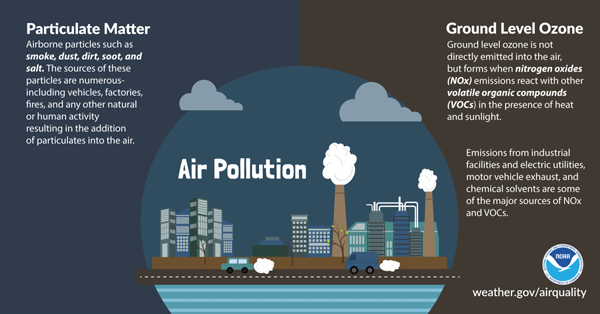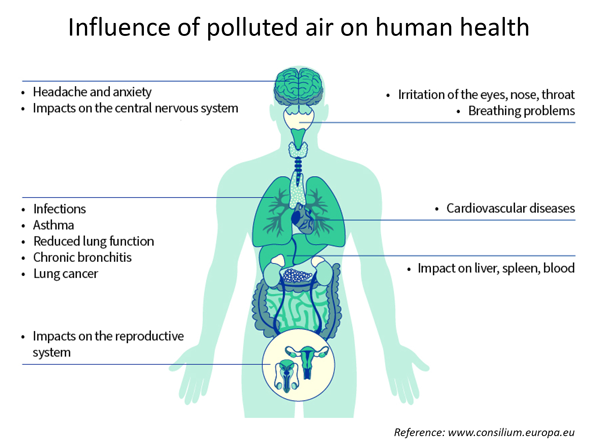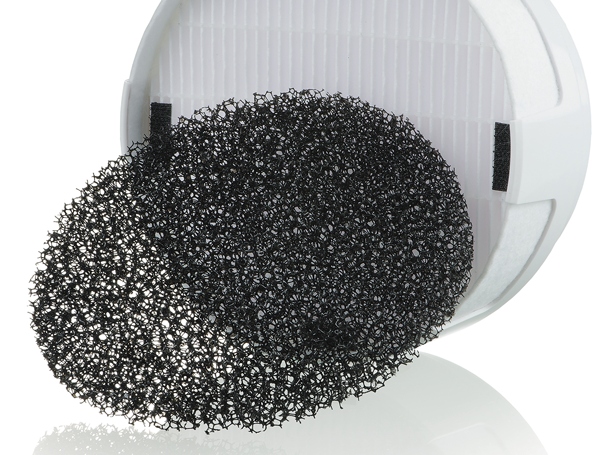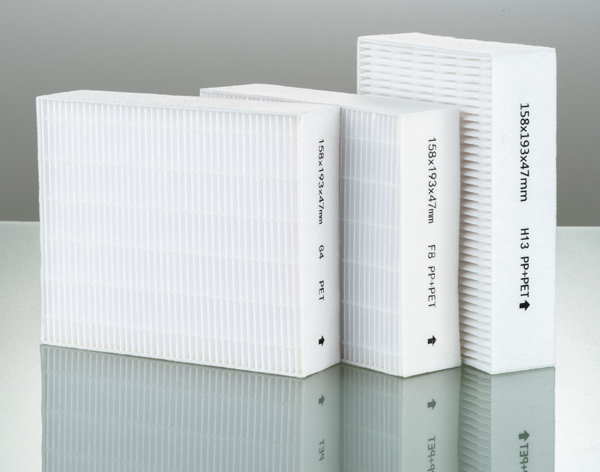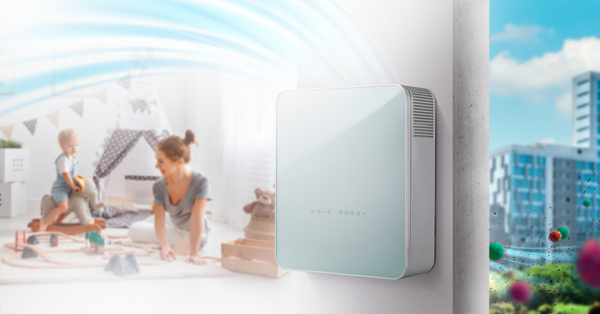Air pollution: what do we breathe in?
Air pollution is one of the most severe environmental threats to human health today. The most credible international organizations and media are constantly raising the issue. According to the World Health Organization, one in three deaths of stroke, lung cancer, and heart diseases are caused by the negative effects of polluted air, which is equivalent to the those of tobacco smoke. Are there any solutions to reduce this impact on people’s health and ameliorate the situation? Experts give a positive answer to this question.
When we open the windows to ventilate our homes or offices, we believe that we will breathe fresh and clean air. Fresh, yes, but is it clean? Most people live in cities and towns that contribute to environmental pollution. As a result, fresh air enters our homes along with dust and other harmful substances. Most of the time, these pollutants have low concentrations and are not harmful to human health. However, near sources of pollution, as well as during forest fires, peat bogs or sandstorms, the situation deteriorates dramatically, which can lead to undesirable health consequences.
Disappointing statistics
Air pollution is recognized by the United Nations to be among the top threats to human health. According to this organization, more than 90% of people around the world today breathe air whose pollution level exceeds the acceptable limits. Significant health damage is caused even at low concentration levels of many air pollutants.
Pollutants have different sizes (ranging from a micron to 0.1 mm) and origins. Studies have shown that fine particles with an aerodynamic diameter of under 2.5 microns (PM2.5) cause the greatest harm to human health. When inhaled, such particles do not linger in the nose and nasopharynx, but instead immediately enter the lower respiratory tract (bronchi, bronchioles, alveoli) and cardiovascular system. A variety of viruses, bacteria, and germs can enter the human body with them. Due to its light weight, fine dust may not settle for a long time and is almost constantly in the air.
The World Health Organization (WHO) has also released its own data on this issue: in 2019, 99% of the world’s population lived in areas where air pollution levels exceeded the values set out in WHO recommendations. According to the organization, the combined effect of ambient and indoor air pollution is a factor in the premature deaths of 6.7 million people a year. According to WHO estimates, in 2019, air pollution caused 4.2 million premature deaths worldwide. Consequently, polluted air indoors caused the premature deaths of approximately 2.5 million people. And this is data for just one year.
Children are most at risk
Children are the most sensitive to air pollution. According to scientific data, frequent exposure to polluted air at an early age leads to long-term health consequences, such as lung and cardiovascular diseases, lung cancer, neurological and neurodegenerative diseases, diabetes, and more. Respiratory diseases associated with air pollution include common childhood illnesses such as upper respiratory infections, otitis media, and allergic diseases.
Due to their physical traits, children are more susceptible to the effects of air pollution than adults, as they breathe twice as fast and often through their mouths, absorbing a larger volume of pollutants. In addition, their respiratory organs are closer to the ground, where the concentration of pollutants is the highest. Children are physiologically more vulnerable to air pollution than adults, as their brains, lungs and other organs have not yet developed well enough, so their defense mechanisms against toxic pollutants do not work as well as adults’ do. Long-time exposure to pollutants can disrupt the growth and formation of their organs and affect brain development in the most important early years of life, leading to long-term consequences for physical and mental development.
Sources of pollution
Ambient and indoor air pollutants are a complex mixture of substances that include dispersed particles, ozone, nitrogen dioxide, carbon monoxide, and sulfur dioxide. It can also contain benzene or heavy metals such as arsenic, chromium, lead, and mercury. The most common sources of air pollution are the combustion of fossil fuels (e.g., coal), as well as waste and garbage, industrial production processes, agricultural activities, construction, demolition, motor vehicles, etc.
The degree of indoor air pollution directly depends on air parameters, as well as on the presence of various sources of pollution within the indoor areas themselves – houses, apartments, kindergartens, schools, medical facilities, etc. Typically, indoor air quality deteriorates as a result of smoking, use of household chemicals and personal care products, cooking, heating with coal and biofuels, etc. It should be noted that solid particles of fine dust resulting from the combustion process are one of the most harmful forms of air pollution. They are colorless and odorless and can penetrate deep into the lungs, bloodstream, and brain, causing health issues.
Since there are both outdoor and indoor sources of air pollution, it is important to meet two ultimate requirements to maintain proper air purity: to ensure that polluted extract air is constantly removed from the rooms, and to establish a constant flow of supply air from outside.
What to do?
While solving the problem of air purification comprehensively requires consolidating the efforts of the entire international community, we can take care of local indoor air purity on our own.
It is ventilation that plays a key role in this. Modern ventilation devices not only constantly extract contaminated air outside, but also purify the fresh supply air that enters the room. For this purpose, coarse and fine filters are used, which ventilation units can be equipped with.
Coarse filters (filtration class G1-G4) capture the largest contaminants: from 60 to 90% of large synthetic particles bigger than 0.4 microns. These filters create a primary barrier to avoid penetration of large contaminants (insects, feathers, fluff, animal hair, large seeds, dust, soot, etc.) into the ventilation device and the room. Coarse filters have a simple design and can be made of a thin sponge, metal mesh, or synthetic fiber cloth.
Fine filters (filtration class F5-F9) are capable of capturing up to 75% of particles smaller than 0.4 microns. Due to the high density of the filter media, they retain the most dangerous particles for human health – medium and fine dust, pollen, fungal and mold spores, and bacteria. The design of most fine filters is not much different from that of class G filters, but they are made of a denser material, which is most often synthetic fabric.
The advantage of using ventilation equipment with air filtration is that the filters can be easily removed and replaced. Any filters can be purchased separately and independently installed both in existing air handling units and in single-room ventilation units (heat exchanger), choosing the desired filtration class. In addition, there are separate filter units (filter boxes) that are installed in supply ventilation systems. Such filter boxes can have not only coarse and fine filters, but also so-called HEPA filters, which provide ultra-fine air purification (minimum efficiency is 99.97% for microparticles of 0.3 microns in size).
Household exhaust fans installed in bathrooms also contribute to the rapid removal of contaminants caused by household chemicals, such as detergents, cleaning products, etc.
Thus, ventilation devices not only ensure constant air exchange and fresh air supply, creating a comfortable microclimate in the rooms, but also maintain a high degree of air purity for adults and children to breathe.
Learn more about Vents ventilation equipment that will stand guard over your health and the health of your children here.






